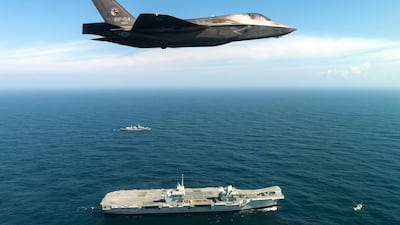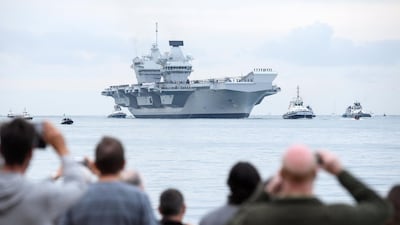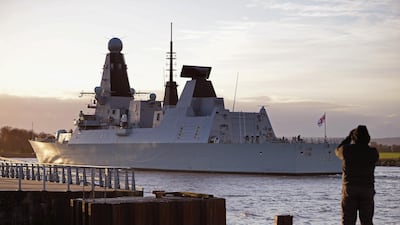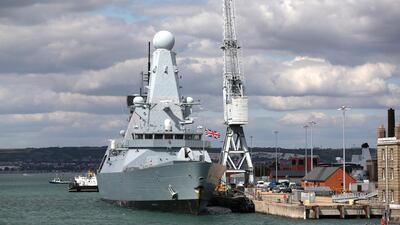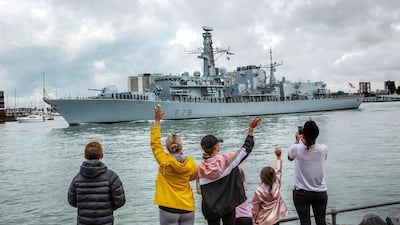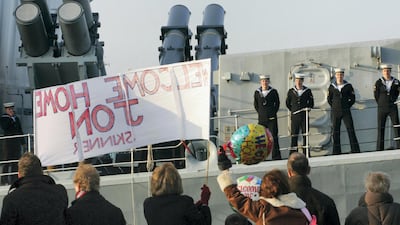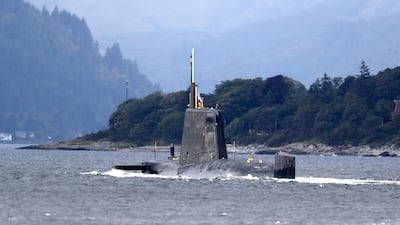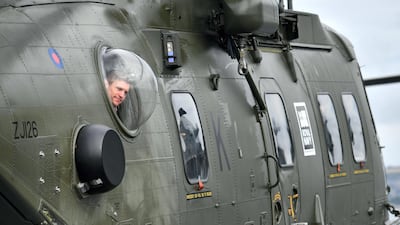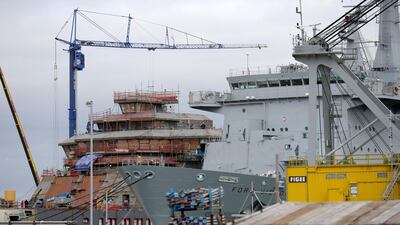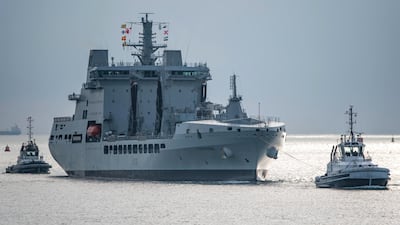Britain's new HMS Queen Elizabeth warship will join France's Charles de Gaulle aircraft carrier to form a highly potent armada in the Mediterranean in the coming months, defence chiefs say.
The Royal Navy’s £3 billion ($4.25bn) carrier with its 18 advanced F35 jets and the French Navy’s 30 Rafale fighters will present a considerable force, particularly against any Turkish forays in the Eastern Mediterranean over the summer.
HMS Queen Elizabeth is also ready to meet any potential ISIS threat at sea, senior naval commanders confirmed, as her maiden operational voyage approaches.
The likelihood of HMS Queen Elizabeth demonstrating her strength when she heads on the six-month deployment in the coming days is growing, with strikes against terrorist targets in Syria and Iraq being considered.
Furthermore, the carriers could be used against potential Houthi anti-ship missiles installations in Yemen, if it was decided they posed an imminent threat.
Defence chiefs have emphasised that the 65,000-tonne warship will lead an extremely potent force when it teams up with the French nuclear-powered carrier.
"There will be a very significant link-up with the French Navy in the Mediterranean with the Charles De Gaulle aircraft carrier and Queen Elizabeth which will come together and exercise together," said Angus Lapsley, the MOD's Director General Strategy. "This will help among other things underline just how potent the UK-French combined expeditionary force can be."
The united fleet of more than a dozen of the world’s most modern warships, including Britain’s Type 45 missile destroyers and Astute hunter-killer submarines, will be the strongest force seen in the Mediterranean for decades.
It will also be a symbolic moment of Anglo-French unity following a souring of relations post-Brexit that saw the two country’s warships on opposing sides during a fishing spat off the island of Jersey earlier this month.
The fleet will present an imposing sight and a dilemma particularly for President Recep Tayyip Erdogan, who has tried to build up a reputation of Turkey’s military might with numerous foreign interventions.
The commander of Britain’s military operations, Vice Admiral Sir Ben Key, also suggested that the fleet would be able to contribute to the campaign against terrorists. “I am entirely sure we can meet the threat of ISIS from the strike group,” he said.
Defence chiefs have also made it clear that the F35 jets will be used to strike the extremists to prevent them gaining a foothold in Iraq.
Once the carrier strike group composed of six warships accompanying HMS Queen Elizabeth leaves the Arabian Sea in the summer, it will sail east to make four lengthy stops in Asia, in Singapore, India, South Korea and Japan.
The potential for a further flashpoint will come when it enters the South China Sea. The British government has yet to confirm whether HMS Queen Elizabeth will make a highly symbolic but provocative passage through the Taiwan Strait, just off the coast of mainland China.
